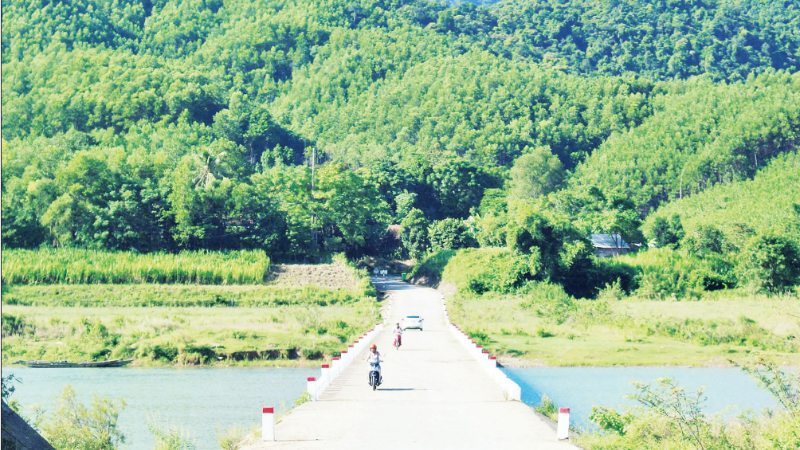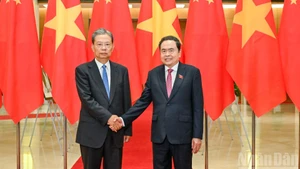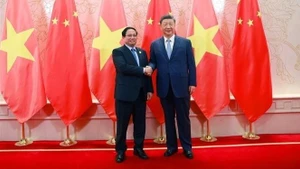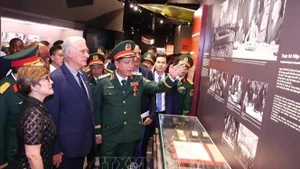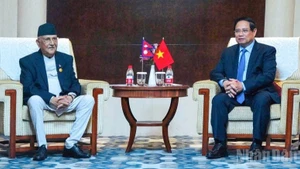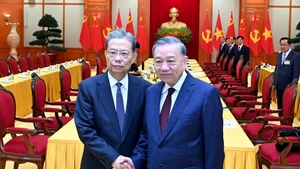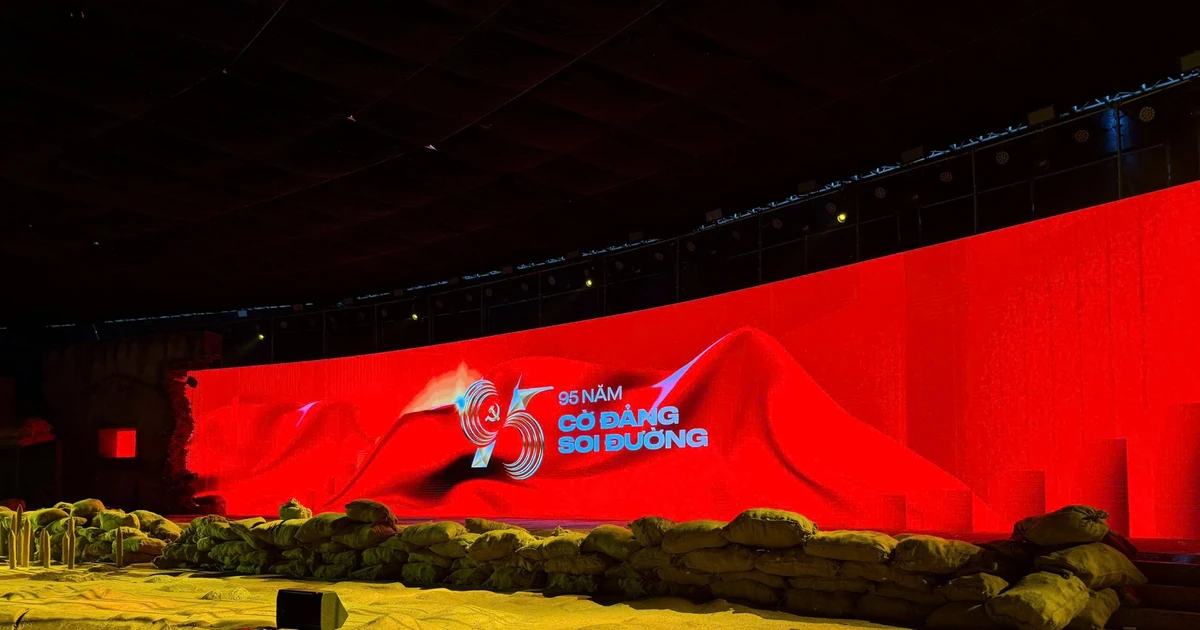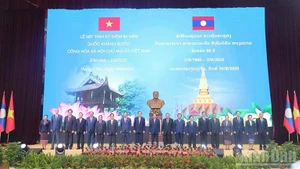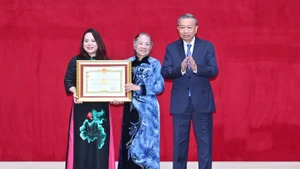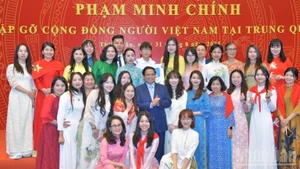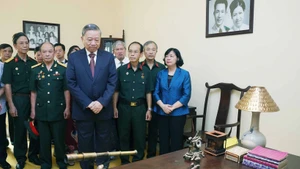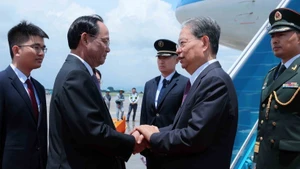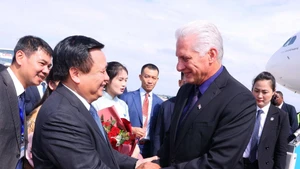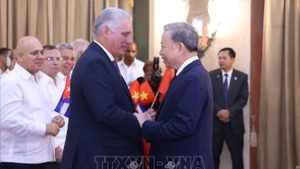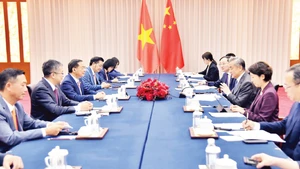Each historical mark in Ba Long is not only a testament to a heroic resistance war but also reflects the deep connection between the people and the revolution, thereby nurturing the aspiration to rise up and build a prosperous future.
The way to the Ba Long Safe Zone (in the old Dakrong district) no longer requires taking a boat up the Thach Han River from Tram Dam as before, from Km41 National Highway 9, follow Provincial Road 588A for nearly 20km to reach the center of the old Ba Long resistance zone.
Sheltering and supporting the Revolution
In Ba Long, almost every family followed the revolution. Veteran Nguyen Hong Nam, 94 years old, in Da Noi village, was a soldier of the Quang Tri Provincial Military Command, and joined the revolution from the Ba Long resistance zone.
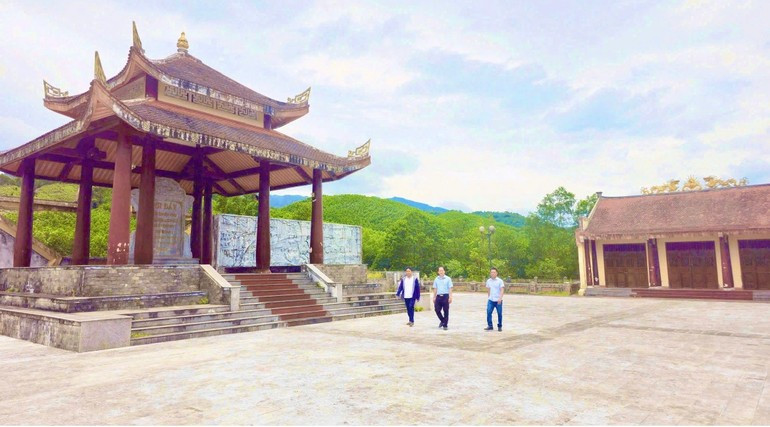
He said that in early 1947, the French colonialists stepped up their attacks and captured many important areas of the province. The Quang Tri Provincial Party Committee decided to withdraw all its forces to Ba Long to continue leading the resistance. On April 14, 1947, the Quang Tri Provincial Party Committee held a meeting and decided to choose the land west of Trieu Phong, Hai Hang, from Hon Linh, Boc Lo, through Khe Su, Khe Cau, Ba Long, extending down to Bong, Hai Dao to build the revolutionary base of Ba Long war zone.
The rugged terrain made Ba Long the centre of resistance leadership, the stationing place of the Party agency, the Provincial Resistance Administration Committee, organisations, main force troops, weapons factories... Here, the Quang Tri Provincial Party Congresses took place, transmitting orders and instructions from the Central and the province to soldiers and people, which was the decisive factor in victories.
Promoting its special position, Ba Long became a safe stop for Party leaders and delegations of cadres from the inter-zones going north and south. Typical examples are the delegation of Le Duc Tho stopping at Ba Long in 1949, the delegation of Pham Van Dong coming to the resistance zone in 1951, Le Duan stopping at the Quang Tri Provincial Party Committee office located in Ba Long in 1952 to direct the resistance.
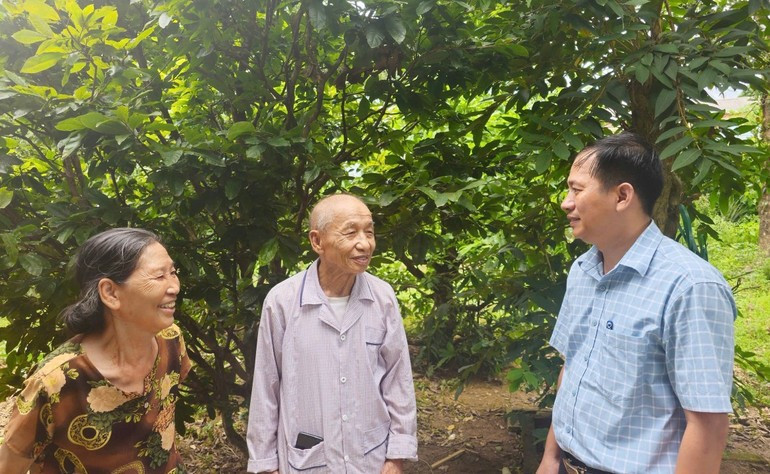
During the 9 years of resistance against the French colonialists, Ba Long was both a war zone of Quang Tri and a cradle of literature and art. The boats going up and down the Thach Han River, transporting cadres and logistics for the resistance to Ba Long at night, became familiar to the soldiers and people here.
After 1954, with its important strategic position, fierce clashes between the revolution and the army of the old southern government always took place in Ba Long. Implementing the Resolution of the 15th meeting of the Party Central Committee in 1959 on the revolutionary line in the south, on October 10, 1965, Regiment 6 was established in Khe Su, Ba Long commune. This was the first mobile main force unit at the regimental level of the Tri Thien-Hue Military Region, marking a turning point in the development of the main force and the scale of operations on the battlefield.
Taking care of Ba Long
When the country was at peace, Ba Long faced many difficulties and challenges. Ba Long could not be left poor. Secretary of the Party Committee of Ba Long commune, Tran Van Chay, recalled that with an investment capital of more than 4 billion VND, since 2000, electricity has reached every house, the old Ba Long war zone has never been so crowded and bustling.
After the electricity was available, the Domestic Water and Environmental Sanitation Programme was deployed to provide domestic water that meets standards for more than 80% of the commune's population. Then came the concrete bridges across the Ba Long River and a 12km long road, connecting Km41 of National Highway 9 to the north bank of Ba Long bridge, which was paved. On the south bank, a fairly wide road was also formed for cars to reach the commune center. Many children in the area passed the entrance exams to prestigious universities, graduated, and were recruited to work in state agencies. Like the family of veteran Nguyen Hong Nam and his wife, they have 7 children, 5 of whom are state officials.
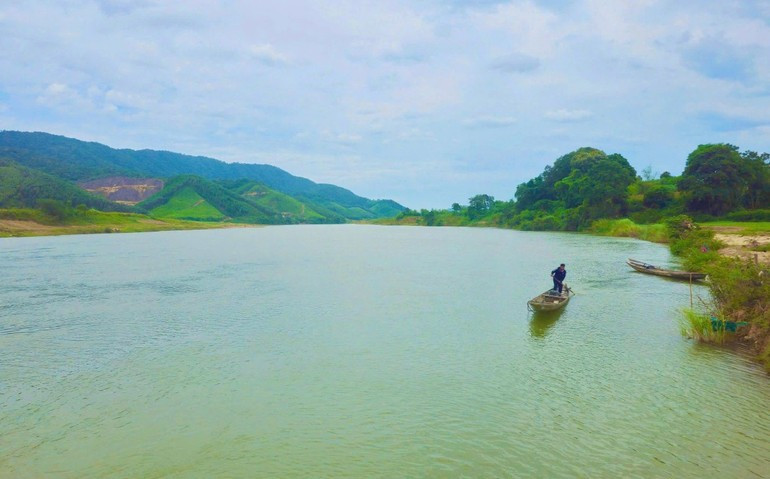
In the hearts of the people of Ba Long as well as the veterans of Regiment 6, the painful memories of the battle on October 19, 1965 in Ba Long will never be forgotten, 53 soldiers of Regiment 6 fought, sacrificed, and were then buried in a mass grave by the army of the former southern regime, and their remains have only recently been found. The wish for a temple to honor and commemorate the heroic martyrs of Regiment 6 was mobilized by Mr. Nguyen Duc Dung, a former veteran of the regiment, former Permanent Vice Chairman of the People’s Council of Quang Tri province, and was completed a few years ago in Khe Su, Ta Lang village. On the day the temple was inaugurated and recognized as a provincial historical relic, the people of the old war zone were excited and moved.
Coming to Ba Long today, at the foot of the high mountains overlapping each other is a wide, fertile valley stretching to the riverbank. Fields of corn, peanuts, and green beans weave a green color as far as the eye can see.
The future is opening up before Ba Long with so much trust and hope. According to Secretary of the Party Committee of Ba Long Commune, Tran Van Chay, this revolutionary land needs large investments, exploiting historical, cultural, and agricultural resources for development. Chay pointed to Provincial Road 588A, saying that the provincial road can no longer meet the demand for transporting goods, leading to low prices for agricultural products.
Along with that, many historical relics, although preserved and restored, have not yet become tourist destinations due to lack of uniformity. Chay is determined to soon complete the general planning and detailed planning of the new commune to submit to competent authorities for approval, as a basis for the continuous direction of the Party Committee and the government. Ba Long will develop, with agriculture as its strength, forming large-scale model fields, producing in a specialised direction to create high-quality products.
